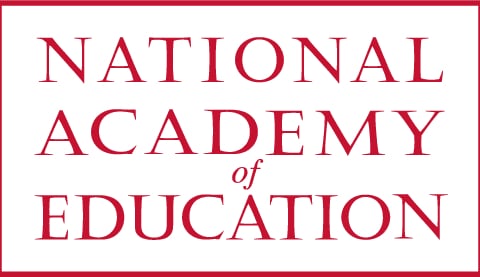COVID-19 Educational Inequities Roundtable Series Summary Report
CHALLENGES TO ACADEMIC LEARNING AND SOCIAL-EMOTIONAL DEVELOPMENT
In addition, the drastically different mode of teaching required some districts to negotiate new terms with teacher unions; for example, what were the new requirements for teaching and how would the potential slowing of learning progress be accounted for fairly? As important, how would districts and schools that provide breakfast and lunch for their most vulnerable students address food insecurity and food delivery? These challenges, too, had the most severe impacts on disadvantaged and historically marginalized students.3
Since March 2020, with two crises – COVID-19 and the awakening for many Americans of ongoing racial injustice – the American education system as we know it has been disrupted and students’ academic and social-emotional learning have been affected. During the NAEd discussions, practicing educators and researchers identified the following key concerns:
- Structural impediments and uneven access to online learning, including problems of technology and the need for new forms of family support;
- Disruption in student engagement with school leaders, teachers, and peers that may threaten mental well-being as well as academic engagement;
- Limited and disrupted access to mental health supports;
- Difficulties in online learning for special populations, particularly young children, children with disabilities and special learning needs, English learners, and students in home environments not conducive to online learning;
- Barriers to effective communication with families and care-givers, which cause additional stress on teachers and students;
- Challenges to teachers and staff necessitating additional professional development; and
- Attending to well-being of teachers and staff whose lives have been disrupted by the pandemic.
2 Auxier, B., and Anderson, M. (2020). As schools close due to the coronavirus, some U.S. students face a digital ‘homework gap’. Pew Research Center. Retrieved from: https://www.pewresearch.org/fact-tank/2020/03/16/as-schools-close-due-to-the-coronavirus-some-u-s-students-face-a-digital-homework-gap/; Herold, B. (2020, Apr. 10). The disparities in remote learning under coronovirus (in charts). Education Week. Retrieved from: https://www.edweek.org/ew/articles/2020/04/10/the-disparities-in-remote-learning-under-coronavirus.html; Romm, Tony. (March, 2020). ‘It shouldn’t take a pandemic’: Coronavirus exposes Internet inequality among U.S. students as schools close their doors. The Washington Post. Retrieved from: https://www.washingtonpost.com/technology/2020/03/16/schools-internet-inequality-coronavirus/.
3 Rothstein, R. (2020, Apr. 14). The coronavirus will explode achievement gaps in education. Economic Policy Institute. Retrieved from: https://www.epi.org/blog/the-coronavirus-will-explode-achievement-gaps-in-education/; Dorn, E. Hancock, B., Sarakatsannis, J., & Viruleg, E. (2020, Jun. 1). COVID-19 and student learning in the United States: The hurt could last a lifetime. Retrieved from: https://www.mckinsey.com/industries/public-and-social-sector/our-insights/covid-19-and-student-learning-in-the-united-states-the-hurt-could-last-a-lifetime#; Goldstein, Dana. (June 5, 2020). Research Shows Students Falling Months Behind During Virus Disruptions. The New York Times. Retrieved from: https://www.nytimes.com/2020/06/05/us/coronavirus-education-lost-learning.html
